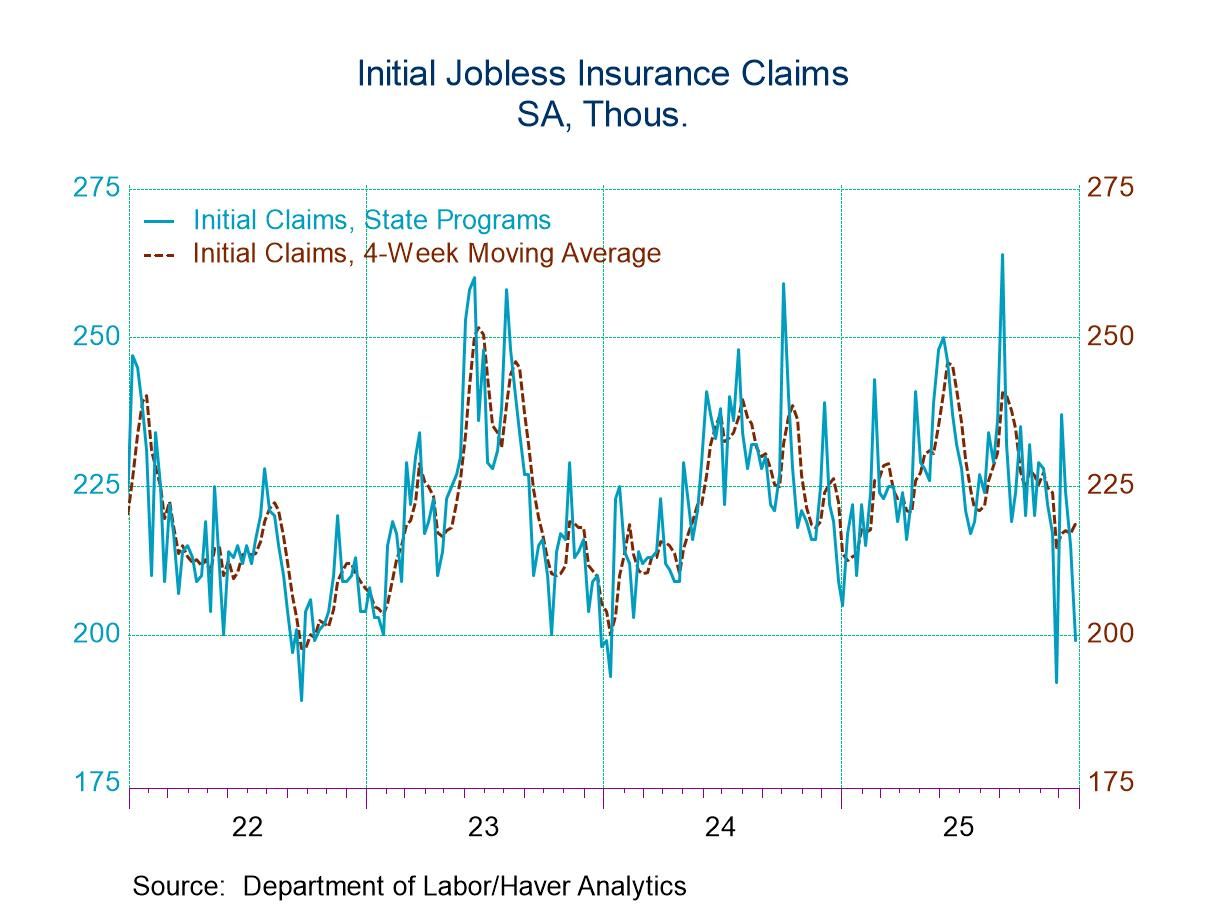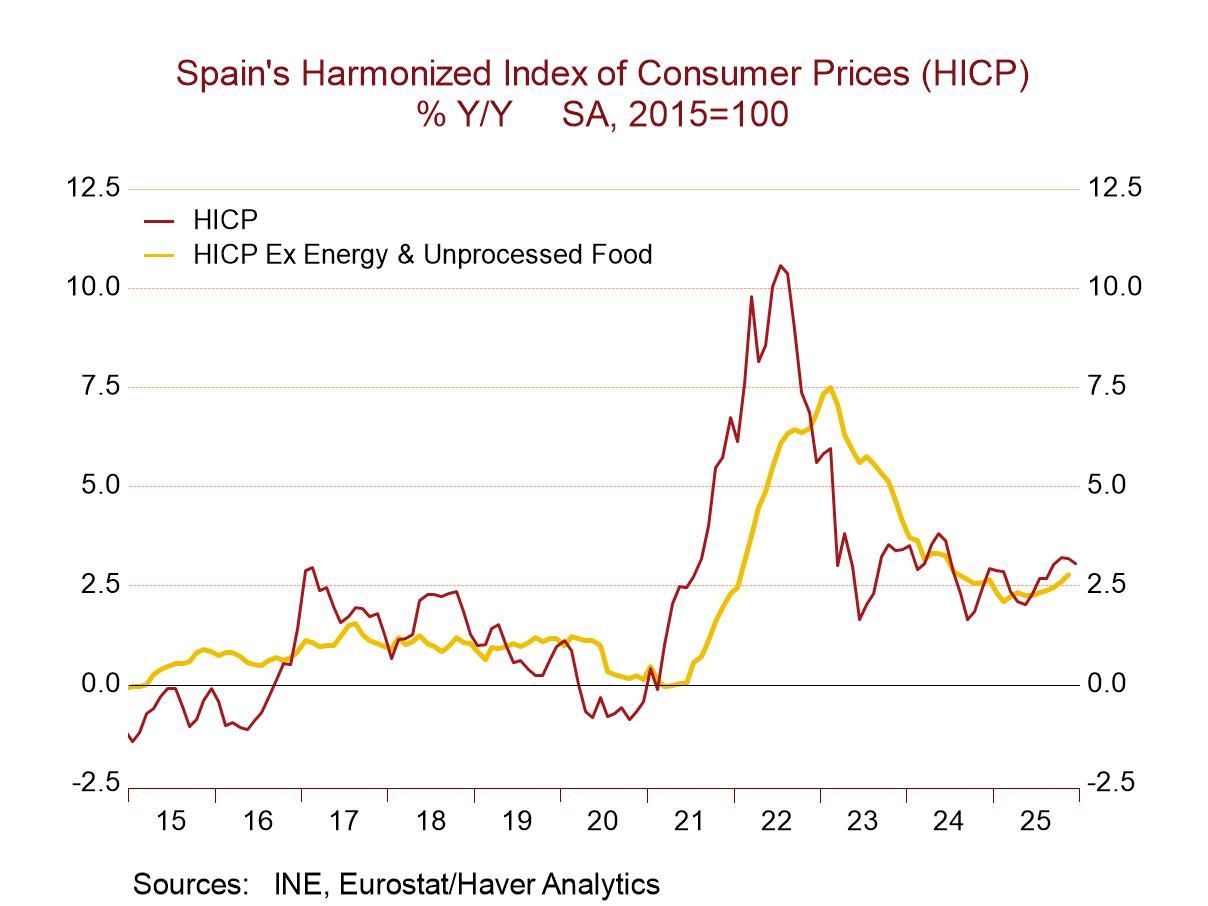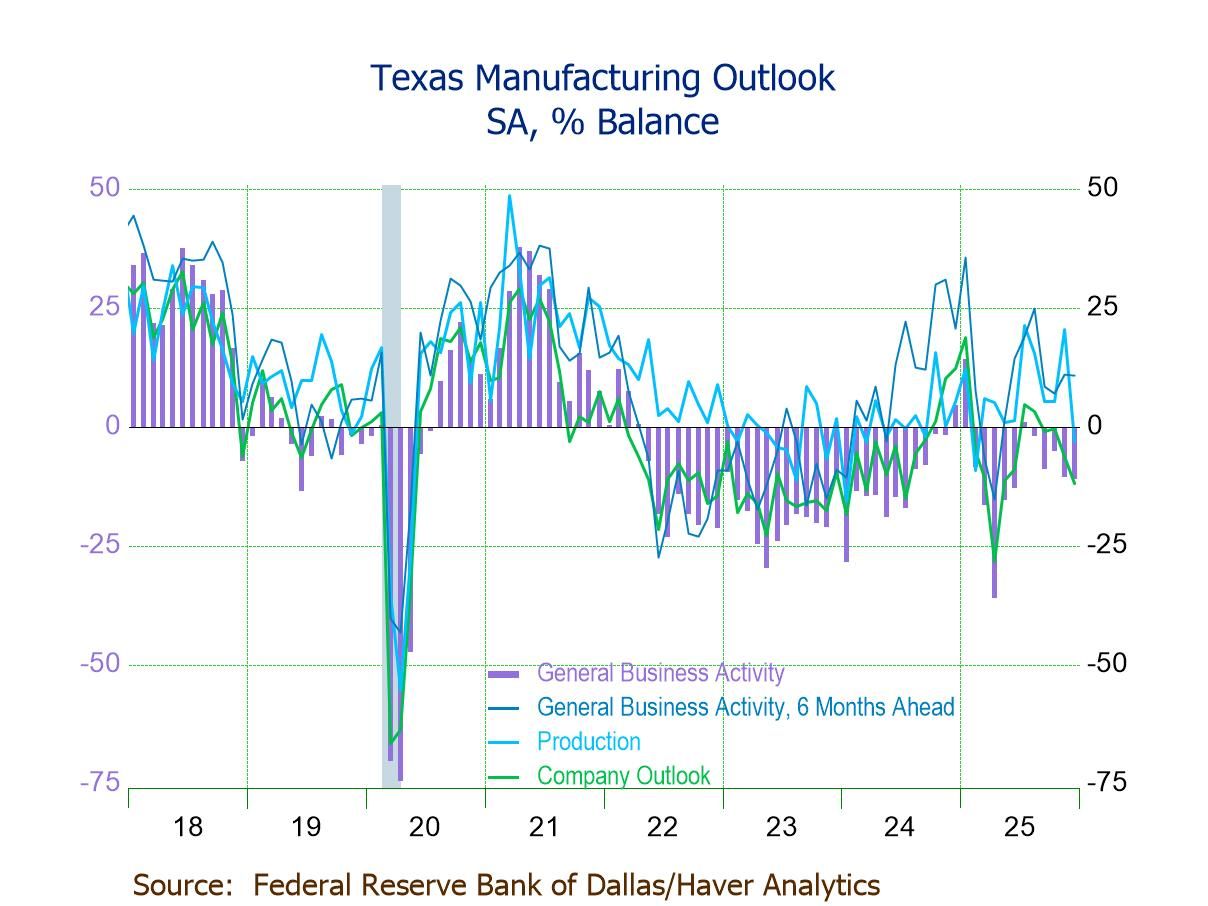U.K. IP Struggles to Log Monthly Gain

U.K. manufacturing output rose by 0.4% in November after falling by 1.3% in October and falling by 0.4% in September. Sequentially, manufacturing output is weakening; it advances by 1.2% year-over-year, the growth rate shrinks to zero over six months and shrinks further to a -5% annual rate over three months.
Trends for output by sector are somewhat complicated with recent months not providing a very clear picture. Among the observations for consumer durables and nondurables output, intermediate goods, and capital goods, only the capital goods industry shows a decline in November. However, manufacturing and all these sectors and subsectors showed declines in October, while in September only consumer durable goods showed an increase along with a minor rise in consumer nondurable goods, intermediate goods show another relatively sharp decline and capital goods were flat.
Sequential growth rates from 12-months to six-months to three-months, as already mentioned, reveal a steady deceleration in the growth rates for manufacturing. But this is not so clearly expressed across the sectors, as consumer durables and nondurables show unclear patterns and only intermediate goods and capital goods output succumb to the pattern of sequential worsening deterioration. Consumer nondurables, in fact, show positive-growth rates on all horizons.
Upon turning to quarter-to-date calculations that compare the annualized growth rates two months into the fourth quarter with the average for the third quarter, we find negative growth in all the components in the table, except under ‘industry-detail’ there, food, beverages & tobacco show a hearty gain.
To get an idea of how tight production might be, I look at current output levels as a percent of their maximum output on data back to 2010. Manufacturing is at 90% of its past peak on this period. Consumer durables is at 94% of its peak, nondurables at nearly 97% of their peak. Not surprisingly, food, beverages & tobacco, which tend to be very trend-dominated, are essentially at their peak reading at a 99.9 percentile standing (stronger only in May 2022). The weakest standing is for mining & quarrying at a 43.7 percentile mark. And surprisingly the utility usage for gas, electricity & water has only 53.6% of its past cycle peak.
The column to the far right looks at the simple percent change in current output compared to levels on January 2020 before the pandemic struck. Output is lower for manufacturing overall by nearly 5% and is higher only for consumer durables (by 1.2%) and consumer nondurables (by 13.9%). For more detailed industries, food, beverages & tobacco are higher by 16.9%, textile & leather output is higher by a very strong 43.6%, motor vehicle & trailer output is higher by 3.2%. Mining & quarrying output is lower by 38.8%. Utility output is lower by 42.2%. This is an astonishingly strong decline as utilities service ongoing activity and growth and except for very small margins is not inventoriable.
U.K. Manufacturing Scene

U.K. economy is showing substantial weakness in its manufacturing sector. This sets the U.K. with the global story of a still impacted manufacturing sector and weak global trade. China, a country that has often been the international juggernaut, has growth that's so weak it is concerned about deflation in that economy. Conditions have changed markedly in the global economy and even though inflation flared strongly in the wake of COVID and has similarly fallen rather sharply in recent months, and while most central banks in Europe and in the U.S. are still fighting inflation, markets are looking to a period in the not-so-distant-future when there will be rate reductions. The anticipation for rate reductions in the United States is particularly virulent although the view suffered some damage by the CPI report issued earlier this week. Globally, conditions remain weak in both the service sector and in the manufacturing sector. Based upon various observations across global purchasing manager indexes, what we mostly observe is ongoing weakness rather than worsening deterioration. The manufacturing sector in the U.K. shows worsening deterioration although the U.K. manufacturing PMI has increased from its low point in August 2023. The PMI still shows industrial contraction.
Robert Brusca
AuthorMore in Author Profile »Robert A. Brusca is Chief Economist of Fact and Opinion Economics, a consulting firm he founded in Manhattan. He has been an economist on Wall Street for over 25 years. He has visited central banking and large institutional clients in over 30 countries in his career as an economist. Mr. Brusca was a Divisional Research Chief at the Federal Reserve Bank of NY (Chief of the International Financial markets Division), a Fed Watcher at Irving Trust and Chief Economist at Nikko Securities International. He is widely quoted and appears in various media. Mr. Brusca holds an MA and Ph.D. in economics from Michigan State University and a BA in Economics from the University of Michigan. His research pursues his strong interests in non aligned policy economics as well as international economics. FAO Economics’ research targets investors to assist them in making better investment decisions in stocks, bonds and in a variety of international assets. The company does not manage money and has no conflicts in giving economic advice.






